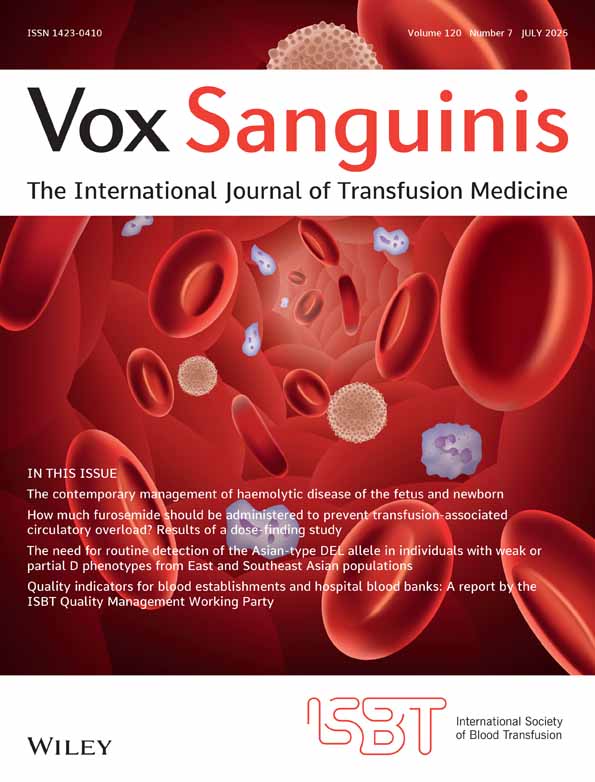Microwave Elution of Red Cell Antibodies
Abstract
Using a commercial microwave oven (750 W, 2,450 MHz), we compared the use of microwave energy to the commonly used method of acid-glycine elution (Elu-Kit II, Gamma Biologicals, Houston, Tex., USA) to elute antibodies from direct antiglobulin test positive red blood cells (RBC). Using a 33% suspension of RBCs in cold saline (1–6°C) in a polypropylene test tube, the microwave technique was comparable for eluting Rh (except anti-c and anti-e) and Kell and superior for eluting Duffy, Kidd antibodies while acid-glycine was superior in eluting S and s antibodies. Consistent results were obtained using the microwave technique when the RBC suspension reached temperature of 57–64°C. Heat or the rate of temperature rise appears to play an important role in the microwave elution process although other not yet identified microwave properties may also be a factor. Microwaves are a quick (8 s) alternative to well-established methods of elution and have shown to give consistent results in our study. Commercially available microwave ovens vary substantially in power, making it necessary to perform an initial calibration of the microwave in order to determine a location within the microwave cavity where exposure to microwaves will consistently achieve temperatures of 57–64°C in all cell suspensions.




